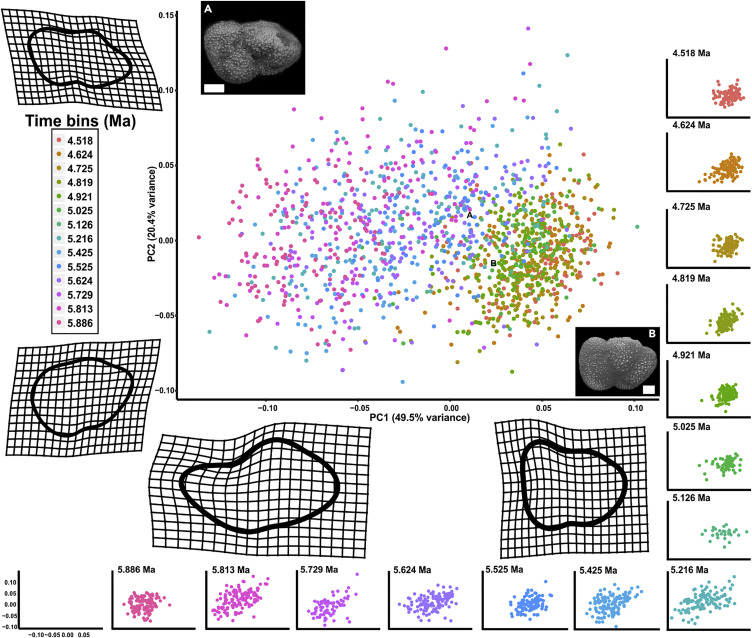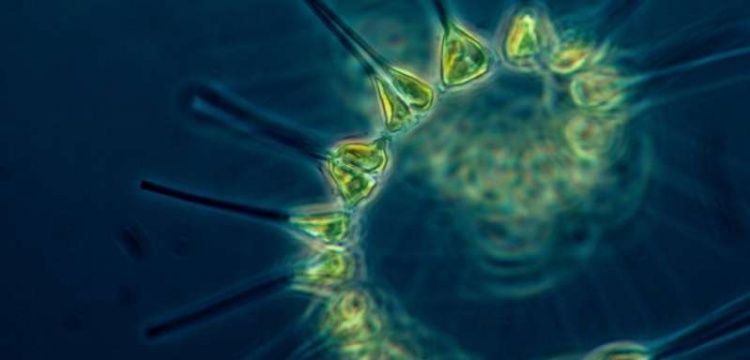Evolutionary Transition in the Late Neogene Planktonic Foraminiferal Genus Truncorotalia... Evolution of planktonic foraminiferal anatomy across Miocene/Pliocene boundary.
A curious branch of plankton evolution
Planktonic foraminifera (forams) -- tiny, shelled organisms that float in the sea -- left behind one of the most complete fossil records of evolutionary history in deep sea deposits. Consequently, evolutionists have a relatively sturdy grasp on when and how new lineages arose and developed their own unique features. However, a study published in the journal iScience reveals that one foram lineage evolved much more rapidly than everyone predicted, and researchers are looking beyond Darwin's original theories of gradual evolution to understand why.

Evolution of planktonic foraminiferal anatomy across Miocene/Pliocene boundary
[Credit: Russell D.C. Bicknell et al. 2018]
"It was an exciting moment. What our study and many others are starting to agree on is that evolution of forams is not necessarily gradual, as Darwin and more recent scientists thought," says first author Russell Bicknell, a palaeontologist at the University of New England's Palaeoscience Research Centre in Australia. "Life can exist for long periods of time exhibiting only minor changes followed by rapid, punctuated shifts."
Bicknell's team, made up of researchers from Australia, New Zealand, and the United States, measured the size and shape of one lineage of forams, called Truncorotalia, using 1,459 fossils from 5.9 and 4.5 million years ago. Using these measurements and time series analyses, they found that the shape of Truncorotalia's shell rapidly morphed 5.1 million years ago. At that time, oceans were cooling and flooding the earth.

Evolution of Truncorotalia in Principal Component Analysis Space [Credit: Russell D.C. Bicknell et al. 2018]
"The abrupt change in the shape of Truncorotalia's shell shows that foram lineages can evolve rapidly, explosively, and dramatically," says Bicknell. "That points to more complex evolutionary dynamics than previously thought and justifies a re-evaluation of the evolutionary dynamics of other foram lineages."
The researchers think either of two post-Darwinian theories could describe the rapid changes they observed: punctuated equilibrium and quantum evolution. Punctuated equilibrium describes short bursts and subsequent steady periods of morphological change within a lineage. The theory of quantum evolution describes broader, rapid splits into new families, orders, and classes. If the theory fits, the researchers have potentially observed quantum evolution at a species level for the first time. In either case, the researchers believe previous theories of gradual evolution in foram lineages need reassessment.
Although the researchers' analyses were limited to a specific window of history, the tools they used can be applied widely to various moderately complete fossil records. They hope that more evolutionists will adopt these tools and continue to challenge standard theories on the foram's evolution.
"Evolution is so much more complicated than we think," says Bicknell. "How, when, and why evolutionary changes occur constantly surprise us. It is one of the reasons working in evolution is so much fun."
Source: Cell Press [October 17, 2018]








 Manisa Mesir Macunu Festivali, 23 Nisan'da başlayacak macun saçımı 28 Nisan'da
Manisa Mesir Macunu Festivali, 23 Nisan'da başlayacak macun saçımı 28 Nisan'da  Namık Kemal'in mezarı ve Gazi Süleyman Paşa Türbesinde restorasyon sürüyor
Namık Kemal'in mezarı ve Gazi Süleyman Paşa Türbesinde restorasyon sürüyor  Roma dönemine ait 3500 yıllık sütunlu cadde mi keşfedildi, güldürmeyin insanı!
Roma dönemine ait 3500 yıllık sütunlu cadde mi keşfedildi, güldürmeyin insanı!  Merhum seramik Sanatçısı Melike Abasıyanık Kurtiç'in eserleri Bir Denizkestanesinin Anıları'nda
Merhum seramik Sanatçısı Melike Abasıyanık Kurtiç'in eserleri Bir Denizkestanesinin Anıları'nda 




